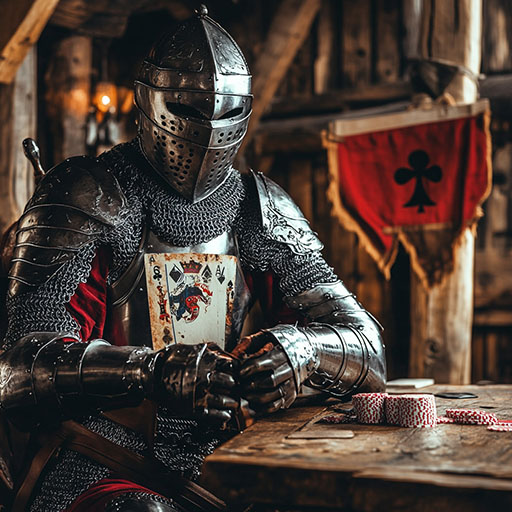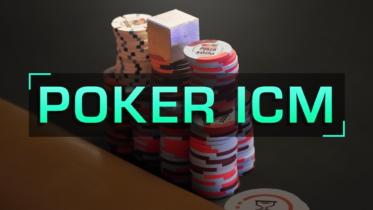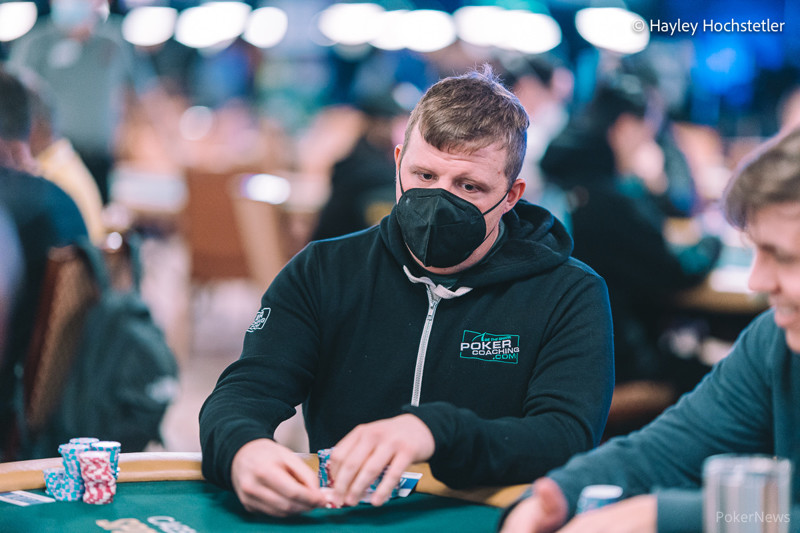While most poker players are focused on playing either poker tournaments or cash games, heads-up poker is often considered the purest game by the top professionals.
The term heads-up refers to a game played between only two players. These matches can be played in a tournament or cash game format.
While there are quite a few differences between heads-up tournaments and cash games, there are quite a few tips that apply to both and that can help you win more consistently when playing these games.
Keep reading and get the top tips for heads-up poker that will help you become a more well-rounded player.
Tip #1. Play Aggressively from the Button
One of the key things you need to understand is that position is very important in a heads-up, and having the button means more than it does in any other form of poker.
With only one other player in the game, there is no chance of hands going multi-way. Having the button means you will be in position against a single opponent every time.
When playing from the button, you will want to start by raising a huge number of hands. When I say huge, I don’t mean 50%, but rather 85% or event almost 100% of all hands you are dealt in some cases.
The exact poker range you should be opening with depends on your opponent. Against an average opponent who does not defend enough, you can easily get away with making a small raise with any two cards.
If your opponent folds too often, you will be picking up so much dead money that nothing else will even matter. You will simply dominate your opponent. If your opponent starts responding to your raises appropriately, you will still have an advantage on the button, but your opponent’s responses will somewhat reduce it.
Regardless of who you are playing and what their style may be, raising at least 80% of all hands from the button in a heads-up match is a must.
Tip #2. Defend Your Big Blind a Lot
In 50% of all your heads-up hands, you will be in the big blind and have cards that don’t seem that appealing.

If you are transitioning from the full-ring on six-max games, you will probably look at hands like J7 or Q5 and want to automatically fold to a raise, but you can’t actually do that in heads-up games.
If you play fewer than 70% of your big blind hands facing a min-raise, your opponent will be able to raise every button and print money from your folds.
Your exact defending range against a button open in a heads-up game should depend on the raise size, as you will want to defend more hands facing min raises and fewer hands facing a big raise, such as 3x the big blind.
Against all reasonable raise sizes, you will want to continue with all suited hands, while your off-suit hand selection will depend on the sizing.
However, remember that you can’t play all your hands as calls either, as you will want to include some hands in your 3-betting range to balance for the times you want to 3-bet with strong hands like big pocket pairs or AK.
Typically speaking, most professional poker players defend upwards of 75% of their big blinds in heads-up games, and that’s a great place to start.
Tip #3. Think In Terms of Hand Ranges
Even in a full-ring game, it is nearly impossible to identify your opponent’s exact hand despite starting hand ranges being narrower.
In a heads-up game, where most players enter pots with nearly their entire range, trying to figure out the exact two cards a player has would be a nightmare.
What you can do, instead, is narrow down their hand range with every play they make, potentially bringing it to a few likely combinations by the river.
If you think about hand ranges correctly, you will always be able to assume which value hands and which bluffs your opponent can have in a given spot.
Based on board texture, the actions your opponent takes, and the cards you are holding, you will be able to construct strategies that work well against your opponent’s particular hand range.
Tip #4. Balance Out Your Ranges
In an ideal world, you could make big bets when you have the goods and get paid off while giving up when you don’t and getting away from it cheap.

In reality, however, you will have to make big bets with both your made hands and bluffs from time to time if you want to have any chance of getting called when you have a monster or get a fold when you don’t.
Heads-up poker, in particular, requires the art of range balancing as long as you are playing against opponents who are at all capable of playing the game.
In most heads-up poker hands, neither you nor your opponent will make much of a hand, so it will come down to who plays their hands more aggressively and in line with the board texture and their perceived range.
Whether you are playing as the aggressor or the defender, you will always want to include some value hands and some bluffs in your range at each decision point in a hand.
Tip #5. Don’t Be Afraid to Bluff
The scariest thing about heads-up poker is the fact you have to bluff a lot. Playing a lot of hands means you will end up seeing many boards on which you have absolutely no connection.
Don’t let the lack of direct connection with the board deter you from bluffing, as it is equally as likely that your opponent has nothing as well.
While in ring games, you may look for hands like flush draws and straight draws to start bluffing, in heads-up games, backdoor draws, and overcards will become prime bluffing candidates.
One thing you must consider before you start bluffing is that you will have to fire multiple bullets to win a pot in many cases.
So, before you raise the flop with your backdoor draw, decide which cards you will continue barreling on the turn and how likely your opponent is to fold to further aggression on later streets.
Tip #6. Adapt to Your Opponent
At the highest levels, all heads-up poker players try to mimic the solvers and play some version of GTO poker. At the lower levels, however, you will come across many players who play a poker strategy that deviates from GTO quite a bit.

Try PeakGTO for FREE and up your game!
In such situations, you should be able to make many exploitative plays that will use the information you collect on your opponent to your advantage.
Playing exploitative poker is the way to go as long as you are not playing the very best heads-up players in the world, as most other players tend to make terrible mistakes.
If your opponent tends to bluff too much on turns and rivers, expand your call-down ranges. If your opponent tends to give up too much, steal more pots on later streets.
Most players tend to go one way or the other when playing heads-up, and very few remain consistently balanced across different betting streets and board textures.
Adapting to each particular opponent as quickly as possible could help you win a lot of money as long as you are not abandoning the fundamentals for the sake of playing exploitatively.
Tip #7. Stay Consistent
One thing you will often see players do in heads up games is they will change their game too often based on how the match is going, abandoning the very basic principles of their poker strategy.
This is a terrible idea, as a sound baseline strategy is key to any adaptations you want to make, and your entire game plan can fall apart without it.
What I mean by staying consistent goes especially for your preflop ranges, which should be more or less set in stone, as well as your checking and betting frequencies on each betting street.
Instead of playing your exact hand, play your hand range and the board texture instead, and you will become unpredictable enough that most players won’t be able to beat you.
In fact, once you learn how to play good heads up poker, most players won’t have the slightest idea where you are at in hands and won’t be able to successfully counter you in the slightest.
Learn from the Best
Heads-up poker is a game that takes a lot of time to master. Fortunately, you can get a lot of help with that, as there are plenty of great training materials online, including our site.
While it’s possible to become a great heads-up poker player without coaching, following a training program will shorten your learning curve by months, if not years, because of the very specific dynamics in this format.





